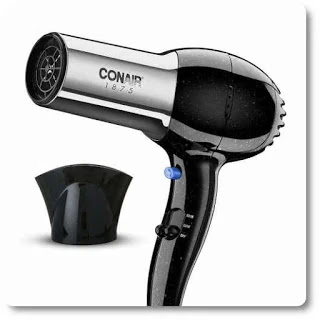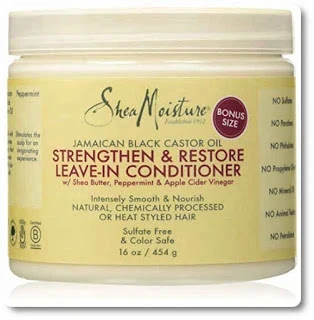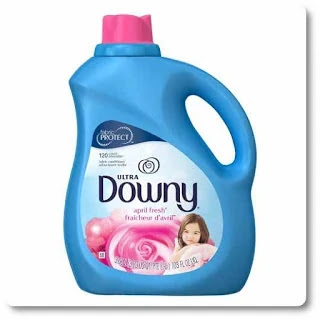How to stop brushes from being full of static simply rub your brush or comb with a dryer sheet before using it. To prevent static build-up on your brushes and combs and ready to use keep them wrapped in dryer sheets during high static conditions like the middle of winter. A hairbrush creates more friction than a comb when brushing your hair. To fight static use a comb and keep you hair moisturized. A light spray of leave in conditioner on your comb or brush will help stop static.
“Allow your hair to dry naturally to reduce flyaway hair and frizz. Heat styling equipment, such as hot tools (Heat styling tools), can cause your hair to become dry.” “Use a leave-in conditioner to help seal the hair cuticle and help with flyaway hair. Also can use a good heat protectant to prevent static hair.”
Ed Shears How To Get Rid Of Static From A Hair Brush
My Top 10 Tips To Stop Static In Hair Brushes
- Rub dryer sheet on brush or use static guard is a common way to stop static
- Static protection, whether applied to combs and brushes or applied to your palm and brushed through your hair, works miracles, despite the fact that it does not smell like flowers.
- In the United States, Static Guard is the anti-static spray of choice. Static Guard spray instantly eliminates static energy and aids in the prevention of further static accumulation. The shelf life of our static cling spray is very lengthy, perhaps all day.
- Wrap brush in dryer sheet in Winter
- Static cling is caused by a lack of moisture. This occurs most frequently during the winter months when the air is drier than usual, as you’ve previously observed. Electrical resistance and conductivity are mostly determined by the amount of moisture present. Static electricity may be generated by the combination of dry indoor air and cold outside air.
- What causes static hair: Electrons build in the environment (in dry air or dry conditions), and depending on their charge, some are negatively charged while others are positively charged. Items having opposing charges attract one another (two unlike objects rub), whereas things with the same charge repel one another, and vice versa.
- Use a comb instead – better
- Use a metal comb – best
- Use an Ionic hair dryer
- Hot tools like an ionic hair dryer works by putting negative ions into the air flow, which helps to reduce or even eliminate static electricity in the hair. The polarity of your hair and brush will be affected as a result of this. When the negative ions in the air pass over them, they no longer have an attraction to one another.
- Keep your hair moisturized
- Detergents are commonly used in shampoos. The natural oils in your (hair oil) hair are taken away by these detergents. Avoid shampooing your hair every day if at all feasible. Could also cause you to have dry skin.
- Keeping your hair moisturized is the most efficient and effective way to ensure that it gets the hydration it requires to battle frizz, static, and other bothersome side effects of changing weather.
- It’s ideal to start with a high-quality shampoo and conditioner formulated for dry hair. By using the right hair care products, you can guarantee that your scalp’s natural balance of moisture and oils is maintained, as well as that your hair shaft remains flexible and nourished throughout time.
- Use a leave in conditioner to tame frizzy hair
- It is necessary to use hair care products that assist in the generation of positive charges in your hair if you want to avoid static electricity. This will frequently include items containing amino acids, which are proteins that have a positive charge.
- The addition of positively charged amino acids to negatively charged hair may assist in the prevention of static electricity development, according to some research.
- Wearing a shower cap or plastic wrap after using a moisturizing product on your hair, such as a deep conditioner, mask, or natural oil, is a fantastic way to lock in moisture. When you wear a shower cap, heat is created beneath it, which opens up the hair cuticle, allowing the maximum amount of conditioning chemicals to infiltrate your hair and help seal your cuticle. If you have a few minutes to commit to this treatment, it might help to speed up the process of repairing damaged hair.
- Get static out of your brush by dipping in water
- This is a quick fix (easiest way) to just quickly dip or run your brush head under running water, shake out the excess water then continue to brush your hair to help smooth away static and flyaways. The problem here is you could end up getting too much water on your strands, but it definitely eliminates flyaway hair quickly.
- Use a light spray of water or hair spray on your brush
- Hair spray or heat protectant should be sprayed onto the bristles of the brush. Use of hair spray on both your hair and your brush, when used carefully, can assist to prevent static electricity from forming.
- This technique works very well on Boar bristle Brushes. Spray a light spray of water directly onto the boar bristles for best results. this will smooth flyaways.
- Use a light spritz of leave in conditioner on your brush
- Then gently run your brush over problem spots.
Ionic Hair Dryers Stop Static
An ionic hair dryer can reduce or even stop static by providing negative ions to the air flow. This affects the polarities of your hair and your brush. Now, they don’t attract each other when the negative ions air pass over them. For example, a heat styling tools such as the Conair 1875 watt full size pro hair dryer with Ionic conditioning.
Use Metal Combs To Prevent Static
According to Meesh, Hair Product Analyst, “Did you know that combs are better than brushes, and metal combs are even better than plastic combs at getting rid of and preventing static. Yes that is right, and that’s because metal combs cause the electric charges building in your hair to discharge, thereby reducing the amount of static electricity present. Here what I like, the Chicago comb short model no. 5 in cardinal red.“
Leave-In Conditioner Works Magic On Getting Static Out
According to Stacey, Hair Research Analyst, “Consider using a lightweight leave in conditioner to stop static. Spray it directly on your brush or comb before brushing it through your hair. This will also remove the static electricity from the brush but as an extra benefit of smoothing down the fly-a-ways. You get double the bang for your buck.“
Also consider evenly distribute Coconut oil, Argan oil or even lotion through your hair to reduce frizz. Be sure to se a tiny amount otherwise it could leave you hair really oily.
How To Make Your Own DIY Static Solution
DYI Static Solution Option 1:
- Take one cup of water and mix it with 2 table spoons of your favorite fabric softer.
- Pour the solution into a spray bottle and spay away.
- Mix well before every use.
DIY Static solution Option 2:
- Take one cup white vinegar and mix with 20 drops of your favorite essential oil like Aroma2Go cooking set of 14 all natural 100% pure plant based essential oil setaroma therapy.
- Mix well before every use.
If you have a brush or comb that is static dip it in a cup or water to release the charge. Did you know that most hair dressers maintain a water spray bottle nearby. The effect of static is neutralized by water. Water molecules attract certain charges, so that their effect on your hair and brush is less powerful. Just spray the water on your brush. It must not be very wet, just a mist. You can shake off excess humidity so that your hair is brushed without water being transferred.
References
Image courtesy of pin.it/vzltwuewqri2fv
Dias, M. F. R. G. (2015). Hair cosmetics: an overview. International journal of trichology, 7(1), 2.






